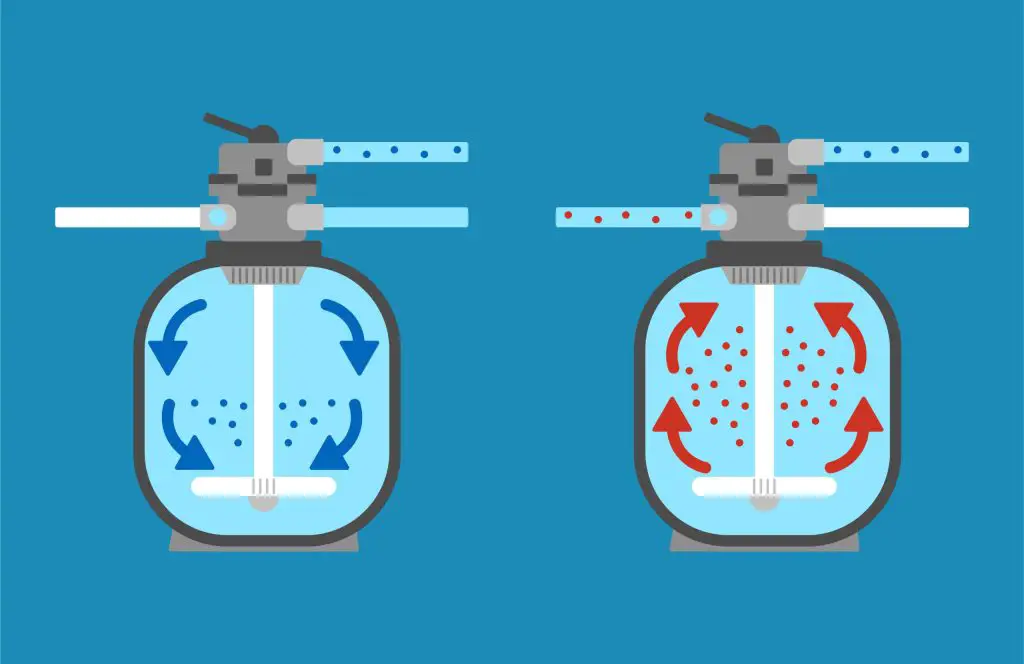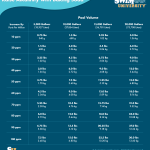To backwash a pool, turn off the pool pump, set the filter valve to “backwash,” and turn the pump back on. Backwash until the water in the sight glass is clear.
Maintaining a clean and well-functioning pool is crucial for its longevity and the enjoyment of swimmers. A vital aspect of pool maintenance is backwashing. Backwashing is the process of cleaning the pool filter by reversing the water flow to remove debris, dirt, and other impurities.
In this guide, we will provide step-by-step instructions on how to backwash a pool, ensuring proper filtration and water quality. By following these simple steps, you can keep your pool clean, clear, and ready for swimming.
Preparation
When it comes to maintaining a clean and healthy pool, regular backwashing is essential. Before you begin the backwashing process, it’s crucial to prepare properly to ensure smooth and effective operation. The preparation stage involves gathering the necessary equipment and ensuring safety measures are in place to prevent any accidents or damage.
Gather Necessary Equipment
Before starting the backwashing process, gather the following essential equipment:
- Backwash Hose: A durable and flexible hose designed specifically for backwashing purposes.
- Owner’s Manual: This will provide specific instructions for your particular pool filter system.
- Protective Eyewear: Safety goggles to prevent any splashes or debris from entering your eyes.
- Gloves: Protective gloves to keep your hands clean and safe while handling the equipment.
- Replacement Sand or Filter: If your pool uses a sand filter, ensure you have extra sand on hand in case replacement is needed.
Ensure Safety Measures
Prior to starting the backwashing process, take the following safety measures to prevent accidents and ensure a smooth operation:
- Power Off: Switch off the pool pump to prevent any unexpected activation during the backwashing process.
- Secure Area: Ensure the backwash area is clear and secure to prevent any tripping hazards or obstacles.
- Check Pressure Gauge: Before backwashing, check the pressure gauge to ensure it’s within the recommended range for backwashing.
- Wear Protective Gear: Put on protective eyewear and gloves to safeguard yourself from potential splashes and debris.

Credit: www.poolassist.com.au
Step 1: Turn Off Pool Equipment
Welcome to our guide on how to backwash a pool! In this step-by-step tutorial, we will walk you through the process of effectively backwashing your pool to keep it clean and safe for swimming. In Step 1, we will focus on the crucial task of turning off pool equipment to prepare for the backwashing procedure.
Switch Off Pump And Filter System
To begin the backwashing process, it is essential to turn off the pool’s pump and filter system. This ensures that no water is flowing during the backwash, allowing the system to work effectively. Locate the power switches or breakers for the pump and filter system, and power them down to halt the water circulation.
Step 2: Adjust Valves
Adjusting the valves is crucial in properly backwashing a pool to ensure efficient filtration.
- Locate the multiport valve on your pool’s filter system.
- Turn off the pool pump before adjusting the valves.
- Rotate the valve handle to the “Backwash” position.
- Make sure the pump is set to a “Filter” mode initially.
Ensure Proper Positioning Of Valves
Properly positioning the valves is essential to prevent water from flowing back into the pool during the backwashing process.
- Keep an eye on the directional arrow on the valve for guidance.
- Ensure the valves are securely set in the designated backwash position.
- Double-check the valve handle to confirm it is correctly aligned.

Credit: www.youtube.com
Step 3: Backwash The Pool
Now that you have started the pump and monitored the pressure gauge, it’s time to move on to the next step – backwashing the pool. Backwashing is an essential maintenance task that helps to keep your pool water clean and clear.
Start Pump
To begin backwashing, make sure the pump is running. The pump plays a crucial role in the backwashing process by pushing the water backward through the filter, removing any accumulated debris and contaminants. Starting the pump is as simple as flipping a switch or pushing a button.
Monitor Pressure Gauge
Keep an eye on the pressure gauge while backwashing the pool. The pressure gauge indicates the water pressure inside the filter system. A high pressure reading is a sign that the filter is clogged and needs backwashing. It’s important to avoid letting the pressure go too high, as it can strain the pump and reduce its efficiency.
Note: If the pressure gauge shows a high reading even after backwashing, it may be necessary to check and clean the filter or seek professional advice.
Now that the pump is running and the pressure gauge is being monitored, you are ready to proceed to the next step.
Backwash Until Water Runs Clear
The final part of the backwashing process is to backwash until the water runs clear. This may take a few minutes or longer, depending on the degree of contaminants present in the pool water. Backwashing involves reversing the flow of water through the filter, flushing out the trapped debris and dirt.
Pro Tip: It’s helpful to have a clear section of the drainpipe visible during backwashing. This way, you can easily determine when the water runs clear by observing the discharge. Once the water appears clean, you can move on to the next step in pool maintenance.
In conclusion, backwashing is an important step in maintaining a clean and healthy pool. By starting the pump, monitoring the pressure gauge, and backwashing until the water runs clear, you ensure that your pool water remains free from debris and contaminants. Remember to perform regular backwashing, as recommended by the manufacturer, for optimal pool performance and longevity.Step 4: Rinse The Filter
After backwashing the pool, the next important step is to rinse the filter. This step ensures that any remaining debris and contaminants are thoroughly removed from the filter, helping to maintain the efficiency of the filtration system.
Turn Valves To Rinse Position
Start by turning the filter valves to the rinse position. This will redirect the water flow through the filter in the opposite direction, flushing out any remaining impurities.
Run Filter For A Few Minutes
Once the valves are in the rinse position, run the filter for a few minutes. This will allow the clean water to flow through the filter, carrying away any residual debris and ensuring that the filter is thoroughly rinsed.
Step 5: Return To Filter Mode
After completing the backwashing process, it is crucial to switch the valves back to the filter position to ensure the pool filtration system operates effectively.
Switch Valves Back To Filter Position
- Turn off the pump to prevent any water from flowing through the system.
- Adjust the multiport valve to the filter position by rotating it clockwise.
- Restart the pump to reinitiate the normal filtration process.
Ensuring Proper Functioning
- Observe the pressure gauge to ensure it returns to the normal operating range, indicating that the filtration system is functioning correctly.
- Check for any leaks around the valves and connections to prevent water loss and maintain the efficiency of the system.

Credit: serapool.com
Conclusion
Maintaining your pool’s cleanliness is crucial for optimal performance. Regular backwashing helps clear debris efficiently. Remember to follow the steps outlined for a sparkling clean pool. A well-maintained pool not only looks inviting but also extends its lifespan. Keep backwashing to make the most of your pool enjoyment.





